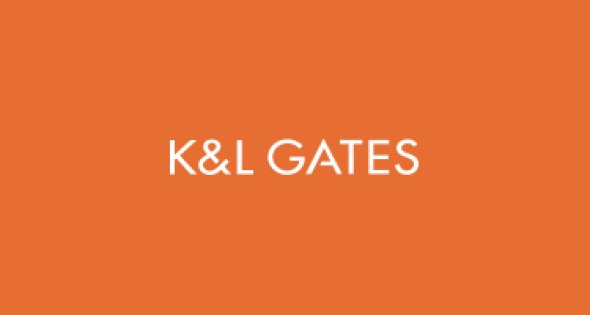
Opportunity Zones
20 Jan, 2020
By Mary Burke Baker
GENERAL OBSERVATIONS ABOUT THE EVOLUTION OF OZ. I have spoken at many OZ events around the country in recent weeks. My overriding impression is that there is great interest in OZ but still a large knowledge gap of the basic rules as well as how OZ can apply to an particular project or business venture.
This serves both to deter the use of the OZ incentive because of the fear of the unknown, and also to pose the risk that mistakes will be made because stakeholders are proceeding without full or accurate knowledge of what they are doing and therefore OZ projects and businesses may not qualify and investments won’t qualify either. Another major challenge is the matchmaking – connecting investors/funds/developers/entrepreneurs. There are several start-ups springing up that will try to provide that matchmaking service, some of which expect to come on-line as early as this fall. Yet another top concern is whether we have the certainty to move forward without final regs (in most cases I think we do). One more concern arises from the negative press reports about OZ that focus, one-sidedly, on certain big real estate projects without taking into account many of the smaller projects and businesses that are still in the pipeline or on the drawing board.
- FUNDS FALLING SHORT? There are also reports that OZ funds have not been able to raise the capital that they hoped to raise. Some attribute this to the perceived uncertainty as we await final regulations, while others think the 10-year hold is an impediment to investors who are not used to holding on to an investment that long. Others just think that the entire incentive is just too much hassle. While it is true that some QOFs have failed to meet their mark, there are many OZ deals going forward, and many others in the pipeline.
- INCREASED EDC INVOLVEMENT. One factor that is likely to spur OZ projects is the increased involvement of state and local economic development authorities in proactively seeking OZ investments in their localities. Many EDCs are just now beginning to realize that they must seriously engage in order to compete with other locations and facilitate OZ projects and developments. More states and cities are holding their own OZ conferences to showcase their zones and market a package of incentives that could complement OZ.
- CONCERNS ABOUT GENTRIFICATION. Much of the negative press has focused on whether OZ developments will result in unintended gentrification, driving out the very residents of communities that OZ is intended to help. While Treasury has determined its hands are somewhat tied on the extent of impact information reporting the IRS can require and the prospects of legislative efforts remain murky, some communities are taking matters into their own hands, establishing their own criteria and requirements with the intention of making sure OZ projects and businesses achieve the policy goals of the incentive. As you proceed with projects and businesses, be sure to ascertain whether your location has these rules.
- INCREASED FOCUS ON OZ OPCOS. Another development is the increased interest in using the OZ incentive to attract operating businesses. While communities are happy to have real estate projects, including affordable and workforce housing, they LOVE the idea of operating businesses moving into the zones because of the long-term impact on the economic base of the community and the jobs they will create. High tech, quality of life businesses (i.e., grocery stores, medical clinics, restaurants, etc.), services, manufacturing, and other types of businesses to bolster the community are all targets of the EDCs.
- WILL THERE BE MORE OPPORTUNITY ZONES DESIGNATED AS A RESULT OF NEW 2020 CENSUS TRACT BOUNDARIES? Based on my discussions with Administration officials, it sounds like they may have cooled on this idea. It’s not looking good for any new opportunity zones to be designated.
- DON’T FORGET OTHER AVAILABLE INCENTIVES. HUD, Commerce and other Administration officials remind me that the Executive Branch is making a strong push to eliminate the red tape so that OZ projects and businesses can qualify for as many other federal incentives as possible. This includes grants, the Section 108 loan guarantee program, and reduced fees. Recall the matrix I sent out a couple of weeks ago identifying over 130 federal incentives that may be available to OZ projects and businesses. I understand that over 150 policy changes have been made by the federal government to accommodate OZ.
- WILL THERE BE TWEAKS TO THE OZ LEGISLATION? As mentioned in earlier OZ Newz updates, work is underway on Capitol Hill to tweak the OZ legislation to require impact information reporting and to make other changes, including changing the 12/31/19 date to 12/31/2020 to qualify for the 15% step-up in basis, and perhaps establishing certain impact criteria, modifying the “sin” list, and other items. The hope would be to make these changes in a year-end omnibus bill, which is a common feature of December legislation when lawmakers take the kitchen sink approach to finishing up their business so they can go home for the holidays. As of this evening, however, it’s looking increasingly likely that Congress will not be able to pass all of its appropriations bills and will instead approve a continuing resolution to fund the government, perhaps into early 2020. If that is the case, all of the dishes that would normally go into the kitchen sink probably will stay in the cupboard, i.e., it would significantly reduce the chances that an OZ package (or other non-appropriations policy) would be included. It is possible that Congress could enact something like an extension of the 12/31/19 date after the first of the year so 2020 investors could still qualify for the 15% step-up, but remember that we will be inching up on primary and campaign season and that makes an already complicated legislative situation even more complicated. So, while there is a will among some to make changes, it’s unclear if there will be a way.
- HOUSE WAYS AND MEANS COMMITTEE TO HOLD ROUNDTABLE TO CONSIDER OZ. A bi-partisan group of HWMC lawmakers will hold a private roundtable discussion with civic leaders to assess the impact and state of the OZ incentive so far. This is an attempt to be responsive to the negative press surrounding OZ and to determine whether and how the incentive could be improved (see above item on legislative tweaks). This roundtable should not be interpreted as an effort to discontinue OZ, but rather a way for Members to hear directly from community leaders whether the negative reports are accurate, the good news stories about OZ, and suggestions for improvements, including impact investing and establishing uniform criteria to measure whether OZ policy goals are being met.
- HOUSE HEARING. On a similar note, the House Small Business Economic Growth, Tax and Capital Access subcommittee held a hearing this week to consider Opportunity Zones. The key takeaways were calls for greater accountability, transparency and information reporting to ensure that OZ is being used in a way consistent with policy goals. The predominance of real estate projects compared to operating companies was also highlighted. Committee hearings and roundtables all serve to build a record to support legislative initiatives, as discussed above.
And last but not least …
- FINAL REGULATIONS. Dan Kowalski, the Treasury official leading the OZ regulations project, says that the final regulations, which will amalgamate the two rounds of proposed regulations, will be around 400 PAGES. It is the aspiration to release these regs to the public around Thanksgiving, but that is admittedly an optimistic timeline since the regs haven’t yet even been sent to OMB for review. Year-end may be a more realistic goal, but even that could be optimistic. Under either scenario, reading the OZ regs may be part of your holiday festivities – something to look forward to J
Mary Burke Baker
Government Affairs Counselor
K&L Gates LLP
1601 K Street NW
Washington, DC 20006-1600
Phone: (202) 778-9223
Fax: (202) 778-9100
mary.baker@klgates.com
www.klgates.com
Related Posts
-

GOVERNOR STEIN ANNOUNCES JETZERO SELECTS NORTH CAROLINA FOR $4 BILLION AIRPLANE MANUFACTURING HUB, CREATING 14,500 JOBS IN GUILFORD COUNTY IN LARGEST JOB COMMITMENT IN STATE HISTORY
-

MICRON AND TRUMP ADMINISTRATION ANNOUNCE EXPANDED U.S. INVESTMENTS IN LEADING-EDGE DRAM MANUFACTURING AND R&D
-

OTTO AVIATION ANNOUNCES NEW MANUFACTURING FACILITY AND HEADQUARTERS IN JACKSONVILLE, FLORIDA
-

TEXAS INSTRUMENTS PLANS TO INVEST MORE THAN $60 BILLION TO MANUFACTURE BILLIONS OF FOUNDATIONAL SEMICONDUCTORS IN THE U.S.
-

NVIDIA to Manufacture American-Made AI Supercomputers in U.S. for First Time
-

Metals Sector in St. Louis Region Thrives with $500 Million Investment
-

GE Aerospace to Invest Nearly $1B in U.S. Manufacturing in 2025
-

Entos Pharmaceuticals Announces $198.5 Million Partnership with the Governments of Canada and Alberta to Accelerate Biomanufacturing of Fusogenix PLV Next Generation Therapeutics
-

Regional Growth Partnership and JobsOhio Welcome Meta to Northwest Ohio with New $800 Million Data Center Announcement
-

TexAmericas Center Announces New Qualified Site









